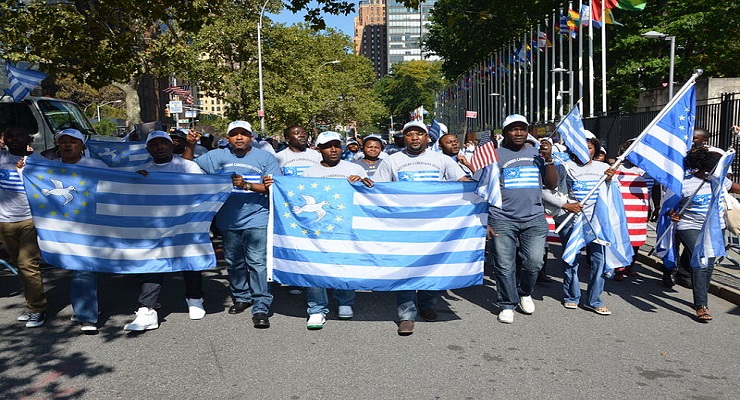
The “Anglophone Crisis” that has increasingly spun out of control in Cameroon is a constitutional problem. Its root causes can be traced back to 1961 when the British Southern Cameroons entered a union with the Republic of Cameroun. The ill-constituted union, bound in a constitution, has led to an armed conflict.
Some Background
The West African country styled the Republic of Cameroon was a German colony between 1884 and 1914. It was known then as “Kamerun”. Following the defeat of the Germans in World War I, Kamerun was greedily split between the French and British. Both territories were administered separately thanks to a League of Nations mandate and later as “United Nations trust territories” between 1916 and 1960.
French Cameroon gained independence in January 1960 as “The Republic of Cameroun”. On its part, the territory that became known as the British Southern Cameroons, following the February 1961 plebiscite, is said to have achieved “independence by joining” the Republic of Cameroun.
Herein lies the origin of the problem of what is known today as the “Anglophone Crisis” in the Republic of Cameroon. The ambiguousness of “independence by joining” left Southern Cameroonians thinking they were to form a Federation of two States, equal in status, upon joining the Republic of Cameroun. But things turned out differently. The Republic of Cameroun had an annexationist agenda and the Southern Cameroonians would be the losers.
Delineating the problem
The poorly negotiated Federation was formed in 1961. Its Constitution was barely discussed and was imposed on the Southern Cameroons, hardly the result of dialogue between equal partners. The Head of State of the Republic of Cameroun, Ahmadou Ahidjo, perhaps in complicity with the Premier of the Southern Cameroons, John Ngu Foncha, simply modified the Constitution of his country and renamed it the “Constitution of the Federal Republic of Cameroon”.
Ahidjo, of course, kept his position as President and Foncha became Vice President thereby consecrating a deep inequality between the two States, Southern Cameroons and the Republic of Cameroun, that came into the union as “West Cameroon” and “East Cameroon” respectively.
Ahidjo steadily accumulated massive power as President. As such, he easily abolished the ill-constituted Federation in May 1972, its Constitution illegal in the Southern Cameroons as its Government was not privy to that Constitution, in favor of a highly centralized unitary One-Party State called the “United Republic of Cameroon”.
When Ahidjo resigned in November 1982, he was replaced by the current President, Paul Biya. It wasn’t long before Biya argued that Cameroon was already united, so there was no need to have the word “United” in the official name of the country. In 1984, Biya, by decree, renamed the United Republic of Cameroon as “The Republic of Cameroon”.
As such, Biya had arguably “disappeared” the Southern Cameroons from the map by this act. In fact, the name of the country today is the exact same name former French Cameroon had at its own independence. What therefore appears as concerted efforts to annex the Southern Cameroons might, therefore, have become fully evident with this decree/act by Biya. The Southern Cameroons, overnight, became an “Anglophone minority” in Former French Cameroon.
A crisis transforming into deadly conflict
What has followed since Biya’s decree of 1984 is a series of accelerated efforts to wipe out the political, cultural and social identity of the “Anglophones” in Cameroon and replace it with a “Camerounese” form of Jacobinism.
After years of inequality, since 2016 the resistance from the “Anglophones” has culminated into an armed conflict and a drive to restore an independent state of Southern Cameroons renamed “Ambazonia”. The conflict currently is raging in the North West and South West Regions of Cameroon, regions coterminous with the original boundaries of the British Southern Cameroons.
Reports speak of more than 100 villages razed to the ground by government in its scourged-earth policy that has resulted to 160,000 internally displaced persons. More than 20,000 refugees are in neighboring Nigeria alone and over 300 deaths reported by the United Nations have been recorded including scores of the armed mercenaries and security forces of the government. However, real figures may be significantly higher.
The recent entry of arms and of fighters on the side of the ‘indigenes’ of the Southern Cameroons is surely a landmark in this crisis that started building in 1962. It also is a serious warning to the international community that this conflict must be addressed immediately. The last month has seen a spike in casualties as a presidential election is set to take place on 07 October 2018. The world cannot afford to allow this problem to decay further.
Leave a Reply